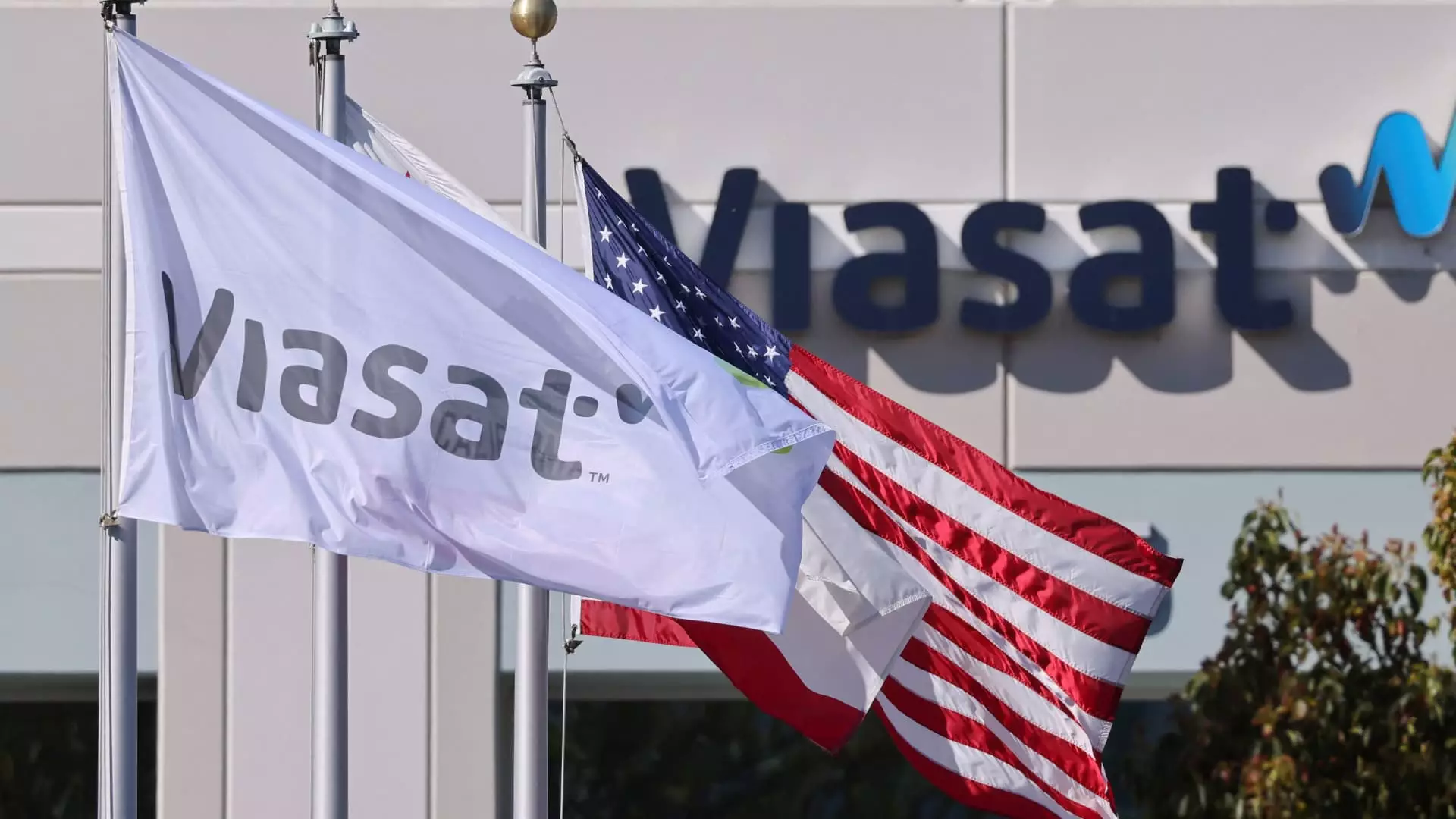The satellite communications industry is undergoing a turbulent transformation, and Viasat is at a pivotal crossroads as it contends with formidable rivals, especially the tech titan SpaceX’s Starlink. Deutsche Bank recently nudged Viasat’s stock to a “buy” recommendation, raising the price target by over 15%. This upward shift signals that there’s a potential resurgence waiting to be unlocked, albeit surrounded by industry challenges.
Market Dynamics and Competitive Pressures
The satellite communications sector is inherently competitive, and Viasat is feeling the pressures as newcomers like Starlink aggressively expand their market share with innovative offerings. Despite this formidable competition, analyst Edison Yu’s upgrade suggests that Viasat is not merely treading water—it’s strategically preparing for multifaceted growth. However, it raises a compelling question: can it genuinely transcend its struggles with its core communication services in a market eager for disruption?
Yu has rated the stock as a buying opportunity, citing over 53% upside potential, a bold claim given Viasat’s recent performance where it plunged over 23% in six months. The crux of the matter lies in how Viasat can capitalize on its competitive edge, even when facing headwinds from rivals poised to dominate both market perception and technological advancements.
Unlocking Hidden Value: Asset Monetization
One of the strongest arguments Yu presents is the potential for Viasat to monetize its L-band spectrum—a vastly underappreciated asset. The versatility and reliability of its spectrum present a unique opportunity to sidestep some of the usual pitfalls of satellite communications, particularly notorious issues like rain fade. Viasat’s holdings in the L-band have garnered attention in light of Ligado’s recent strategic maneuvers, which could open additional revenue streams for Viasat, primarily because it controls much of that asset.
This approach to asset monetization is a rational pivot for Viasat, which needs to bolster its balance sheet. However, stakeholders should remain skeptical—logic dictates that while the prospect is enticing, unlocking such potential is rarely straightforward in practice. The historical volatility associated with the satellite sector indicates that surface-level optimism must be tempered with caution.
Defensive Gains: Spin-Off Potential
Yu further underscores Viasat’s opportunity to separate its Defense and Advanced Technologies (DAT) assets—suggesting that a standalone entity could yield valuations significantly higher than the current market appearance. This insight strikes at the heart of corporate strategy: sometimes relinquishing parts of the company can yield greater returns in the long run. Comparisons with companies like Kratos and Karmin reinforce this premise, showcasing how specialized entities command premium valuations.
However, the reality remains that such strategic splits come with logistical challenges and inherent risks. Would a spin-off genuinely command a higher valuation, or might it signify weakness in the parent company’s core value proposition? While the promise of a more streamlined Viasat is persuasive, historical precedents indicate that investor sentiment can be fickle, especially in complex industries rife with innovation and competition.
The Promise of Satellite Deployment
Additionally, the impending deployment of the ViaSat-3 satellites represents a turning point that could potentially assuage some investor fears. The anticipated cash flow range of $300 million to $500 million by 2027 reflects the broader promise of scaling operations effectively. Yet, will these satellites deliver on their grand narrative, or will they simply serve as another footnote in Viasat’s ongoing saga of struggle?
Investors should not overlook the trajectory of innovation; success hinges on effective execution. The binary nature of success and failure within the satellite domain necessitates that stakeholders maintain focus on what “success” tangibly looks like—both for Viasat and the broader market landscape.
Wall Street’s Mixed Signals
Interestingly, Viasat finds itself in a dichotomous position among Wall Street analysts, with a significant majority advocating for a hold stance amidst this upgrade. This divergence clarifies that while potential for significant upside exists, there’s a palpable caution surrounding the stock’s future. Such mixed signals often complicate the decision-making process for investors looking to understand the landscape.
With a current average target of $20 implying nearly 108% upside potential, the sentiment feels like a gamble; indeed, investing in Viasat may evoke a mix of hope and skepticism. The lure of a bounce back is enticing, but the readiness to embrace risk in this volatile market should not be underestimated.
In closing, Viasat’s journey will be shaped by its ability to navigate industry challenges, leverage its assets, and reassure investors that growth is not just wishful thinking, but a tangible outcome waiting to be realized.

